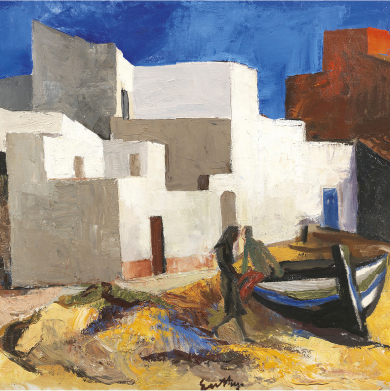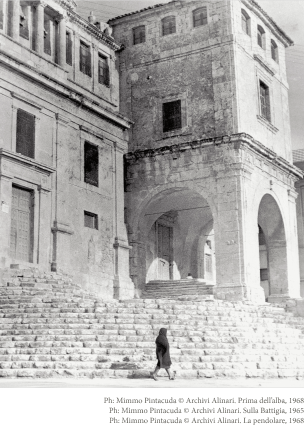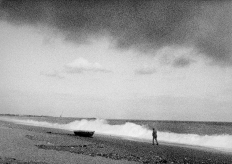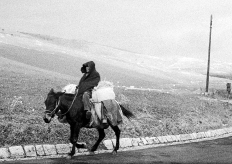A sentimental journey made up of a territory, people and a shared vision.
It is a challenge that has been handed down from one generation to the next, a sentiment that has stood the test of time and remained unchanged.
The feeling of being part of a noble, compelling and enticing story that lives and is passed on with the same thirst as its creator.
A story of redemption, the story of the people who have been at the heart of this great winemaking project that has been 200 years in the making.
History
1824 - 1865
The Origins
Duca di Salaparuta chooses to recover some of these art forms connected to the cultural terroir of Bagheria, Aspra and Casteldaccia with a project aimed at its promotion, which is expressed in the new wine labels and in the docufilm “La teoria dei contrasti” produced by Duca di Salaparuta and realized by Just Maria films, which tells the story of the territory through the beauty and contrasts that have always distinguished this area, making it unique.The production of Corvo wines continues with his son, Edoardo who, thanks to his strong managerial skills, turns his father’s passion into the family business.
1898 - 1930
Duca Enrico
The Alliata family’s interest in Casteldaccia and its wines reached its peak with Duke Enrico,a true master of modern Italian oenology. From Rome to New York, Duca Enrico receives numerous awards and, thanks to him, the winery achieves great notoriety.
1946
Topazia Alliata
The last heir of the family to run the company is Topazia Alliata, daughter of Enrico, wife of Fosco Maraini and mother of Dacia Maraini. With tenacity and independence, Topazia defied the stereotypes of her time by dedicating herself to the running the company with passion and entrepreneurial vision.
1984 - 1987
Franco Giacosa and Nero d’Avola
In 1984 Duca di Salaparuta, thanks to oenologist Franco Giacosa, vinified for the first time Nero d’Avola in purity, staring a new era of Sicilian enology: Duca Enrico, that in the same year obtains the Gambero Rosso’s 3 bicchieri.
The investment on Nero d’Avola in the estate of Riesi continues in the following years with the birth of Passo delle Mule and Triskelè.
2001
The bet
In May 2001, the company Illva Saronno Holding S.p.A. purchased the historic company of Casteldaccia. In 2002 are subsequently acquired three estates of great charm and with a high viticultural vocation.
2003
The oenological challenge on Etna
In 2003, from the collaboration with oenologist Giacomo Tachis, begins a new oenological challenge on Etna which sees Pinot Noir as the protagonist.
2024
Beetween Past and Future
In 2024, Duca di Salaparuta celebrates its 200th birthday with an eno-cultural project that aims to recover the historical and cultural roots of the territory where the winery was born.
Artists of the kind of Renato Guttuso, Mimmo Pintacuda and Emilio Murdolo, become the main characters of the brand’s new visual and value narrative.
CULTURAL TERROIR
Over the last century, the production area where the first Duca di Salaparuta wines were created has been transformed into an open-air artistic workshop, a creative and cultural hub that has given birth to individuals who have shared Sicily and its beauty with the rest of the world through their art.
To celebrate the 200th anniversary of Duca di Salaparuta, we have decided to share this important milestone with the people who, like us, were born here and have always believed in this rich land, which has brought together different forms of art and culture.
In the winemaking industry, this form of ‘self-expression’, which is essential to achieve the perfect utopian work of winemaking art, is what makes a painting, a photo, a short film or a poem so unique.
Renato Guttuso
Mimmo Pintacuda
Emilio murdolo
Close
Renato Guttuso
“To paint is to be inspired by what one sees, and one think, by what one discovers, it can be a sunset a tree, a pair of old shoes or a painting…”
Renato Guttuso, 1966

With the aim of promoting the culture and beauty of ‘our’ portion of Sicily, on the occasion of the 200th anniversary of Duca di Salaparuta and the 50th anniversary of Renato Guttuso’s death, we decided to commemorate the intertwining of the lives of the artistic worlds, by displaying on the label the work “Paesaggio dell’Aspra” (Landscape of Aspra), depicting two young lovers in what, for us, is the landscape of home.
In this way, the Autentici di Sicilia line is dressed in the colours and brushstrokes of Renato Guttuso.
Discover the wines
Mimmo Pintacuda
“What struck me about Mimmo Pintacuda’s photography was its ability to be an exercise in observing reality unrelated to the manipulation of reality. Everything his photos showed was true, but that reality was shown through a visual sensitivity that escaped the eye of anyone walking around Bagheria. This was a very important school for me that influenced my ability to see things as a filmmaker”
Giuseppe Tornatore
The artistic and cultural strand of the territory also becomes the protagonist with the new Tenute project. The artist is Mimmo Pintacuda, a prominent photographer of the mid 20th century, who captured landscapes and moments of everyday life in his Bagheria.
Throughout his more than 50-year career, he took thousands of pictures that document the hidden history of our country – with a special focus on Sicily – during the second half of the 20th century.
As Renato Guttuso wrote, his body of work – which still today is a strong and powerful testimony of artistic and civic commitment with a bewildering effect – deserves to be known, recognised and rewarded.
Throughout his more than 50-year career, he took thousands of pictures that document the hidden history of our country – with a special focus on Sicily – during the second half of the 20th century.
Discover the wines



Emilio Murdolo
“At the start of the 200th century, in the paceful city of Bagheria, located in the Conca d’Oro plain, a charming form of Sicilian figurative art flourished, enveloped in the sweet scent of orange blossom: cart painting”
Lisa Sciortino

This is the opening sentence of Lisa Sciortino’s book on the artistic life of Emilio Murdolo, the first Sicilian cart painter and the master of Renato Guttuso.
The chosen work of art is Villa Valguarnera, which depicts the villa of the same name that served as the summer residence of the Alliata family. It was here that Giuseppe Alliata, Duca di Salaparuta, first discovered his passion for winemaking and produced his first vintage
In this way, the Autentici di Sicilia line is dressed in the colours and brushstrokes of Renato Guttuso.
To mark the 200th anniversary of this winemaking challenge, Emilio Murdolo’s depiction of Villa Valguarnera, the site where the first wine was produced by the Duca di Salaparuta, has been chosen to represent the identity of a new form of expression of Nero d’Avola.
















